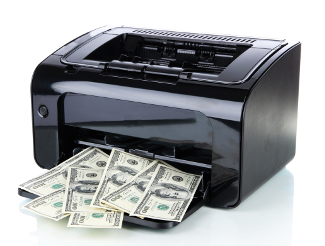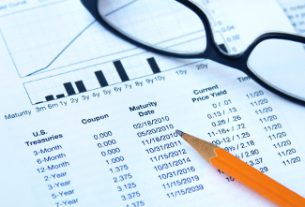Read financial media today and you’ll find instance after instance of business executives and financial industry professionals worried about the Federal Reserve’s tightening of monetary policy. Mind you, this comes at a time when the target federal funds rate remains a hair over two percent, which is historically still very low. The Fed’s balance sheet, too, remains incredibly large, at over $4 trillion. So why is there such hand-wringing over the Fed getting monetary policy back to normal?
The reason is that large corporations have become so incredibly indebted that they require the continuation of easy monetary policy to keep going. Low interest rates make borrowing cheap, enabling companies to borrow to their hearts’ content to pay for investments in new factories, new technologies, and new personnel. But once rates start increasing and it becomes more expensive to borrow, the real financial situation of many of these companies is finally revealed.
Those companies that were too dependent on debt realize that their debt loads are unsustainable. They have become so dependent on debt to run their companies that once rates start to rise, the amount of money they take in from actually producing goods and services isn’t enough to service that debt. If the gravy train of easy money doesn’t continue, those companies face the very painful task of having to cut costs wherever they can, and the very real risk of going out of business.
The Fed’s monetary policy has often been likened to a punch bowl or heroin. It gets everyone addicted to the easy money, then takes away the punch bowl or the heroin. The result, as you can tell from the analogy, is a sudden and painful withdrawal. The resulting effects are an increase in bankruptcies, a decline in business activity, and significant numbers of layoffs.
The Fed has made it obvious that it will continue to hike rates, yet every time the FOMC meets markets react poorly, as though they were hoping for yet more monetary easing. That dependence on cheap money and credit isn’t a good sign for the economy nor is it a good sign for investors. An economic downturn is all but inevitable and investors need to take the necessary precautions right now to keep from getting burned.
Many professional investors have already gotten out of stock markets, worrying that they’re headed towards a crash. And a lot of money has poured into gold, which for centuries has acted as a hedge against inflation and financial calamity. Ordinary investors can benefit from gold too, especially since gold IRAs make it easy to transfer existing retirement assets into gold. With protection against stock market plunges and the same tax advantages as traditional IRA accounts, a gold IRA is the clear choice for investors looking to safeguard their hard-earned retirement savings.
This article was originally posted on Goldco.





